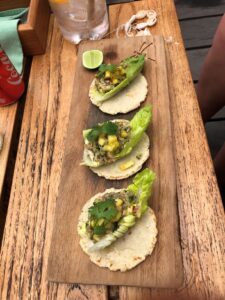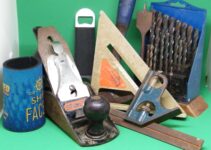 What wood is best for cutting boards?
What wood is best for cutting boards?
A cutting board is one of the easiest woodworking projects to create. However, you can’t just pick any kind of wood and start cutting and grinding. Wood has properties that make them anti-bacterial, and these are the kind of wood that you want to turn into a chopping board.
Today, we will talk about what wood is best for cutting boards? We have several recommendations so, read on.
Best wood for cutting boards
Here is our list of the best wood you can use for your chopping board project.
- Maple– a great option for its hard and closed grain. You can use either hard maple or sugar maple. It is a tough wood that is resistant to bacteria. The color is neutral, and it fits well in many homes.
- Acacia– this kind of wood is not common. It is a highly durable wood and is mostly used for furniture. Acacia is also not as expensive as maple. The thing with acacia is that they vary in color, but most are light.
- Walnut– another hardwood that is best for the kitchen. It is dark, and it is best used in kitchens with dark overtones. Walnut is softer than maple, but it does mean it is not durable. Walnut is a favorite of chefs as it has the right hardness for slicing and chopping.
- Beech – this wood is great for generic boards. This a type of hardwood like Maple. It measures 1,400 pounds on the hardness scale. Like the other wood choices we have on our list, this is safe to use for food. The great thing about beech is that it is impact-resistant and yet it does no damage knives. It is a better choice than teak and walnut, but cannot surpass maple.
- Teak – this wood has a hardness rating of 1,070 pounds. It can take a beating and will not show scratches. It is impact-resistant but will underperform if compared to beech and walnut or maple. As a tropical word, it has hard grains. One downside is that it can damage knives over time. Another problem with this wood is that it has large pores, making it susceptible to become a home for bacteria and fungi.
While many consider bamboo as a great choice, it comes with some concerns. Bamboo can damage a knife. It is also prone to splintering and can cause injuries in the long term. Bamboo, however, is more resistant to water, and they are easy to grow. As such, they are sustainable.
Choose from our list and make sure that you price your chopping boards properly. Beech is the cheapest, and you can only sell them for $20 in the market. Maple and Acacia are expensive, and you can sell them for at least $65 each.
Wood not to use for cutting boards
Since we touched on the subject of wooden chopping boards, let us have a quick discussion about the types of wood that you should not use for chopping boards.
- Abura – causes nausea and vomiting
- Albizia – a hardwood that causes giddiness and even nose bleed; allergic reactions can also cause pink eye.
- Alligator Juniper – a type of wood that is a strong irritant.
- Balsa and Bamboo – both of these are easily available, but they are known irritants.
- Brazilwood – this is known to cause blisters, headache, and nausea.
- Cedar – a large variety of cedar can cause irritation. Some can cause migraine, asthma, runny nose, respiratory disorders, and so much more—just stay ways from this wood if your project is a chopping board.
- Australian cypress – this wood is known to cause swelling eyelids. It can also cause boils and asthma. Many other variants of cypress cause irritation such as Gowen, Leyland, Mexican. Monterey, and the Mediterranean. Some cause headaches and rashes.
- Mulga – never use this type of wood. It causes irritation, and it contains poison, too. Aboriginals use this poison to tip their spears.
If you need more information, you can always visit Wood Database. This website has a table which tells you what kind of wood varieties are dangerous.
Cutting board designs
The most ordinary cutting board design is a rectangle. As a woodworker, you should know that these designs are easy to make. And because they are easy to make, they are sold at a really affordable price. As such, you really cannot make money off this simple design.
If you are up for it, you can create chopping boards that are not common. An example of this is a chopping board made with light and dark wood—glue them together as a board to give your chopping board some character.
- Use rubber – wood may slip as a person uses it for chopping. One of the best ways to prevent this from happening is by gluing rubber at the bottom. The downside to this design is that the customer cannot use the other side of the board anymore. The alternative is to just send the customer a rubber mat along with the chopping board.
- Use rings – use rings so the customer can hang the chopping board on a hook. Boards with no rings cannot be hung, and are often left on the sink to absorb water. Wood should be hung so the water can dry—more moisture means more bacteria.
- Explore different shapes – do not limit yourself with rectangles Experiment how you can put handles on the board. You can also make round ones if you like, or oval-shaped boards for bigger chopping requirements.
- Make a puzzle – try to create puzzle pieces from a long rectangular wood; divide the wood into four pieces and shape them like puzzle pieces. This allows people to use only one or two of them, and they can even use the other parts for serving food.
- Use pyrography – if you like art, then you can use pyrography to bring life to your board. Pyrography is the art of using fire to burn parts of the wood to make photos. You can also etch your brand name with this technique.
As you can see, there are many ideas to make your chopping board look sophisticated. Consider your chopping board project as an art. Draw inspiration from others. If you are out of ideas, you can easily.
How to make a cutting board
The first step to making a cutting board is to choose the wood. Once you have settled in this, you can start following the steps in this section.
Step 1: Flatten the board
You need a joiner to make the board flat or an electric planer where you can insert the board. If both of these tools are not available, your only other option is a manual planer. The board must be flush if laid on a flat surface.
If the board rocks even just a little if you put it on a flat surface, then it is not flat. Make sure that it is because this is a customer’s basic expectation. Nothing is more irritating than cutting on a board that isn’t flat.
Step 2: Trim and Glue
This step is only applicable if you are putting together different kinds of wood for an artistic effect. You need a joiner to make this happen. Essentially, you are putting together wood planks of different contrasting colors to make it look like a single piece.
Make sure that the sides are flushed. Use strong wood glue and then clamp them. Dry them overnight or for two days—this depends on the type of glue you are using. Once it is dry, you can trim the board into your desired shape.
On this stage, you may also add a handle. Usually, people just drill large holes for handles. You can use a Forstner bit to drill a huge hole in it.
Step 3: Smoothen the board
You surely have a sander—use an orbital sander to smoothen the board. Start with a low grit and gradually increase it to 220 grit. This should give you a smooth finish. If you have a router, you can use it to give your edge a different look.
Step 4: Raise the grain
While water can raise the grain, it may flood the wood. Your best option to raise the wood’s grain is to use denatured alcohol. Wipe it with a cloth. It dries faster and would raise the grain faster than water. Leave the wood to completely dry, and then sand it again with 220-grit sandpaper.
Step 5: Protect it with oil
The last step on how to make a wooden chopping board is to apply oil. Make sure that it is food-grade. You can buy this from pharmacies and from woodworking big box stores.
You have to apply the oil generously until the wood gets soaked. Wipe off the excess and let it dry overnight. Once dry, repeat the process two more times. If the wood looks dry, do it again until the wood becomes shiny.
As you can see, making a chopping board from wood is a long process. If you are considering this project, it is better if you make five to ten chopping boards all at once. This way, you oil and dry them at the same time. By the time they are dry, you have at least ten pieces to sell.
Frequently Asked Questions About What Wood is Best for Cutting Boards
How thick should a wood cutting board be?
The ideal thickness is of a wooden chopping board is two inches. At the very least, it has to be one and ¼ inch. This allows for impact absorption and durability.
Is bamboo cutting board better than wood?
No, bamboo splinters easily. The truth is that bamboos are actually grass, not wood. Despite this, bamboo cutting boards are tough and may outlast wood because they are more porous. Over time, bamboo easily absorbs more bacteria than hardwood.
Can I use any wood for a cutting board?
No, not all types of wood are suitable to make as chopping boards. Some woods are irritants and can even cause death. An example of this is the western red cedar. Some softwood like pine also break easily—they are great for cutting and slicing, but not for chopping.
Summary
Chefs and expert cooks prefer wood because they are resistant to impact. As a woodworker, you have a huge market waiting for you should you decide to sell chopping boards.
In your product description, you should never forget to add the type of wood you used, and why you selected that particular wood. Your knowledge about wood and how the different types of wood are used in the kitchen are both going to improve your sales conversion rate.
Also, you should add the benefits of that wood, and provide a recommendation. For example, you could recommend hardwood for chefs, then recommend softwood for domestic kitchens.
Cutting Boards can be a great profitable woodworking project that can be sold at your local markets, or online on market places like Etsy.
Now that you know What Wood is Best for Cutting Boards, which ones will you choose?
Happy Woodworking
Ben @ Been A Tree Wood


